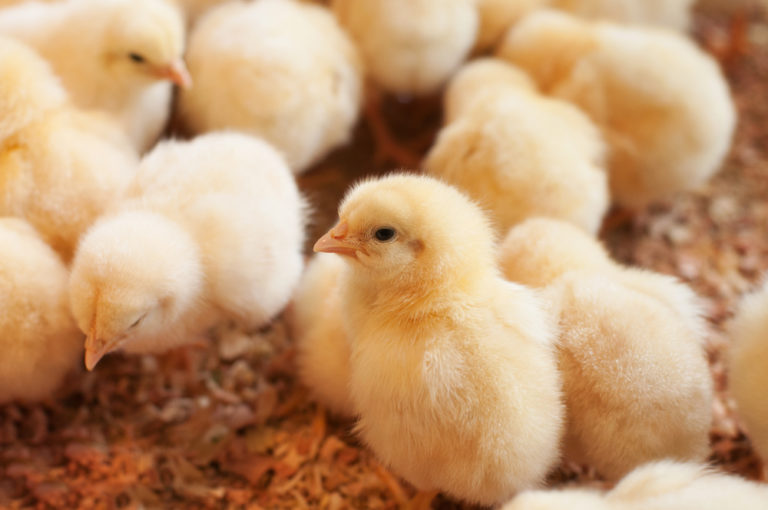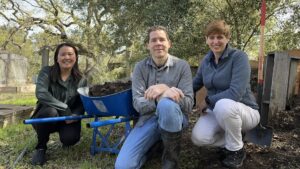Dutch startup In Ovo has completed a Series A raise with Singapore-based disruptive food system venture fund VisVires New Protein and global specialty chemicals company Evonik.
The company would not disclose the size of the round but said it was “several million euros.”
Launched in 2013 as a spinoff from Leiden University, the startup’s first solution addresses the issue of male chick culling in the commercial egg industry through an automated process that can determine the gender of fertilized eggs before hatching.
Many aspects of our modern food system are based on the industrial model, which requires conformity of processes, optimum efficiency, and obtaining cheap inputs in order to achieve the economies of scale that are necessary for food companies to achieve global reach.
When it comes to egg-laying hens, male chicks are considered an unwanted byproduct of production simply due to their breed. Egg laying birds are a different breed of chicken than meat birds, which are referred to as broilers in the poultry industry. Some of the most common egg laying breeds include hybrids, Rhode Island Reds, and Leghorns.
Broiler birds, on the other hand, are predominately Cornish and Plymouth Rocks that have been bred to achieve a 5-pound market weight in less than five weeks, which is staggeringly faster and larger compared to the meat birds poultry companies raised decades ago. Slower-growing and smaller-framed egg-laying breeds, therefore, are a poor fit for the broiler industry’s standards and processes.
So, instead of raising male egg-laying chicks for meat consumption, they are killed using a variety of methods including gas and maceration — a practice that is often unknown to consumers and difficult for some to accept. It’s not unique to the US, either. Companies in both Australia and the UK practice male chick culling in different forms.
With consumers paying closer attention to our food system, the widespread killing of male chicks has drawn greater scrutiny in recent years. In June 2016, trade group United Egg Producers, which represents nearly the entire US egg industry, announced a plan to phase out the killing of male chicks by 2020 using a technology that would identify the sex of the chick in the egg, allowing the egg to be discarded before it forms a chick.
Enter In Ovo: ‘in the egg,’ the company has developed an automated process to gender test fertilized eggs. The idea is based on existing vaccination techniques employed by the broiler industry. Instead of injecting a vaccine into the egg, however, In Ovo extracts a small sample of allantoic fluid through a tiny resealable hole and analyzes it by mass spectrometry for three specific biomarkers.
“Their technology could be especially relevant in Asia who are the largest egg producers in the world with more than 1.8 billion laying hens,” said Matthieu Vermersch, managing partner at VisVires New Protein based out of Singapore. “We have identified and looked at a number of other companies in the space for over two years now. In our opinion, In Ovo is ahead of the competition in terms of technology, scalability, and consumer acceptability. Moreover, having followed the founders of In Ovo, Wouter Bruins and Wil Stutterheim, over the same period, we are convinced that they possess the right mix of passion, tenacity, and innovation to execute on such an ambitious project.”
In Ovo plans to work with German and Dutch partners over the next four years to develop a prototype that can rapidly and accurately analyze and sort large quantities of eggs. On the laboratory scale, the company currently needs one second to analyze each egg. They expect this rate to accelerate to a few microseconds per egg through further R&D.
It will also incorporate already available and tested technologies for sorting and handling large quantities of eggs, with their first product launch planned for 2020.
Vermersch and his team discovered In Ovo while mapping out the various companies and research institutes across the world to create a solution. Other groups working specifically on this issue include Israel’s eggXYt, Ovabrite from Texas, and the University of Leipzig in Germany is also working on a solution using infrared light.
“As with all our portfolio companies, our investment approach starts off by identifying and defining existing global problems within the food value chain before searching for potential solutions,” said Vermersch.
This marks the fourth investment for VisVires New Protein, including French insect-based fishmeal maker Ynsect, Irish AI ingredient discovery platform developer Nuritas, and German at-home mineral water making device creator Mitte. The outfit has two more deals in the pipeline that should be complete early next year, with the hopes of having the fund fully deployed across 10 companies by the end of 2019.
“Building on what we have done for Fund I, our investment journey around the themes mentioned above has made us aware of other key issues and questions in the food industry that remain untapped and underinvested. To this end, we have plans to launch a second fund shortly after, which will be in the region of $100-150 million,” said Vermersch.
As for deal flow, the VC looks for projects that could completely reinvent the value chain in our food system as opposed to ideas that provide only marginal improvements to existing techniques. This includes highly scalable solutions that can be applied around the world and especially in Asia. Some of the quandaries it’s trying to crack are how to improve the efficiency of protein production in a sustainable manner, how to make nutrition and diet part of the public health paradigm instead of part of the problem, and how to strike a better balance between healthy food and mass market food, which doesn’t always offer the best nutrition.
Having an exceptional management team is also a must for VisVires New Protein. And while it looks for investment opportunities globally, Vermersch reports that its Asian pipeline has grown exponentially since it first started.
“Until recently, we’ve seen Asian start-up companies focus mainly on new food experiences and distribution. We are beginning to see a shift to more tech-focused innovation, especially in places like Singapore – the fruits of public investment in research in nutrition and food science. In a short span of time, Singapore has established itself as an innovation hub for the food and nutrition industry. Leading companies are using Singapore as a test-bed and springboard into the larger Asian market. Singapore has all the right ingredients to be the “Silicon-Valley” of food in Asia. As the sector matures over the next 3-5 years, we certainly anticipate more investable opportunities in the region.”

















Sponsored
International Fresh Produce Association launches year 3 of its produce accelerator